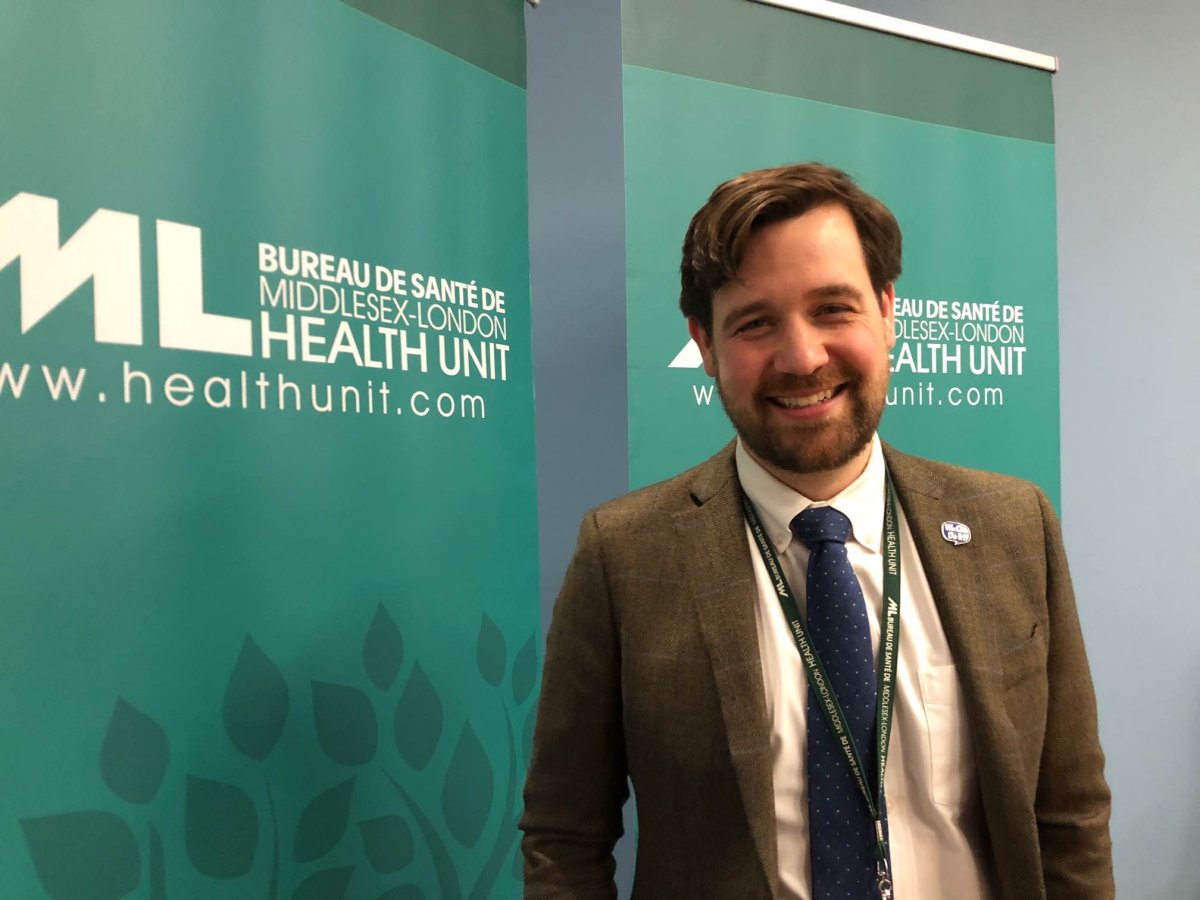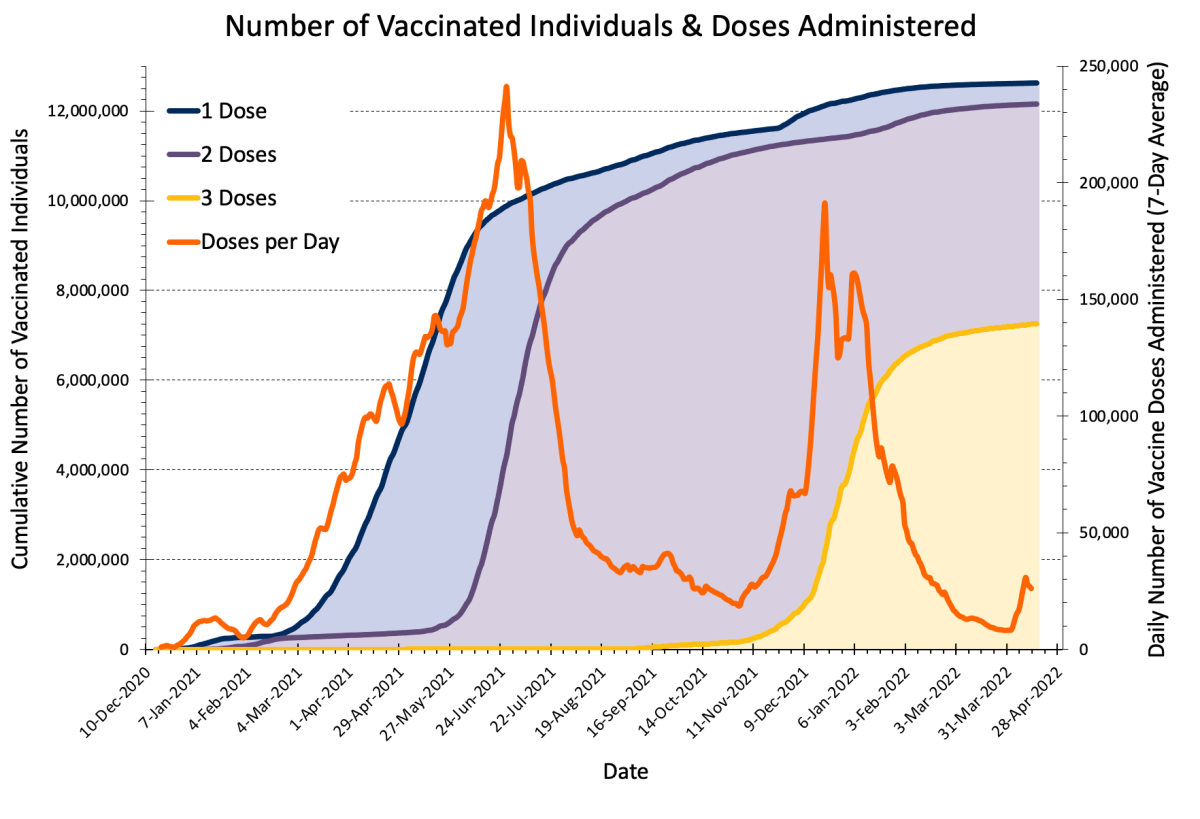While early signs are pointing to a plateau in transmission of COVID-19, the risk of infection remains higher than at any point in time prior to the ongoing Omicron wave, local health officials say.

That’s why it’s essential that Londoners continue to “use the tools within your toolbox” to protect against infection and possible severe outcomes amid the sixth wave of the pandemic, driven by the highly transmissible Omicron subvariant BA.2, the region’s medical officer of health said.
“The COVID-19 Provincial Science Table last week did allude to a levelling off of wastewater data and COVID wastewater counts across the province. It is still early days and we hope that that continues,” Dr. Alex Summers said during a weekly COVID-19 media briefing on Tuesday.
“But I will, again, express caution in getting too far ahead of ourselves. We’ve learned that we need to go slow when it comes to backing off of our urgency around responding to the COVID-19 pandemic, so mask up, get vaccinated, if you’re sick, stay home, and for now, limit that social circle ever so much.”
The region recorded 33 additional COVID-19 cases on Monday and reported 379 cases and one additional death over the weekend. The death, which involved an unvaccinated person in their 70s, actually occurred in the fall but was not originally reported to the health unit. It was only after data cleaning was performed that the death became clear, Summers said.
It should be noted, however, that with PCR testing limited, case counts are not considered a fully reliable reflection of COVID-19 activity in the region.
In updated projections released last week, the province’s COVID-19 Science Advisory Table said that while wastewater data suggested COVID-19 transmission may have peaked, “modelling indicates that hospital occupancy is likely to continue to rise for some time, with uncertainty in the timing and height of the peak.”
At LHSC, 56 inpatients with COVID-19 were reported in the hospital system’s care on Monday, with 25 being treated specifically for COVID-19. Six of the 56 patients were in adult critical care, while five or fewer were in Children’s Hospital, and five or fewer in pediatric critical care.

Get weekly health news
LHSC has been dealing with a rise in staff absences recently, with hundreds of staff off work either from COVID-19 infection or because they were a close contact of someone who tested positive.

As of Monday, 261 staff members within LHSC were positive for COVID-19, a decrease from the 321 figure reported on Thursday, but still much higher than where hospital brass would like it to be.
“We are adjusting staffing and doing everything we can to mitigate our health and human resource challenges in order to continue to provide safe patient care. At this time, there are no formal plans to reduce our services,” Carol Young-Ritchie, LHSC’s chief nursing executive, said during Tuesday’s briefing.
“Last week we did need to cancel a limited number of surgeries based on the number of staff that we had off with COVID. This week, we are running our surgical grid at around 90 per cent, our occupancy is around 94 per cent…. At this time, we have no plans to cancel any surgical procedures.”
Last week, Dr. Wael Haddara, LHSC’s chief of critical care, noted that most of those being treated in the intensive care unit had not been vaccinated against COVID-19.
As of April 16, the most recent data available, 91 per cent of local residents five and older had gotten at least one dose of the vaccine, while 88 per cent had received two.
Only 51 per cent, however, have gotten a third dose booster, a figure that has only increased about six per cent since the end of January, according to health unit data. Similar data trends have been seen across the province, according to data from the COVID-19 advisory table.
“You need to ensure that you are up to date for all recommended doses of the COVID-19 vaccine, which means that if you’re over the age of 12, you should have a booster dose, and if you’re over the age of 60, as you become eligible, you should get that fourth dose,” Summers said.
While the initial two-dose regimen is helpful, it offers less in the way of protection against infection and symptomatic disease with Omicron compared with the original strain of COVID-19 and earlier variants, Summers said.
“In the last number of months, our highest case counts have been amongst those ages 18 to 49. That’s the group that we really need to get protected. That’s where we’re seeing the highest burden of illness when it comes to case counts.”
The time between when one gets infected by COVID-19 and begins to show symptoms has typically been between three and seven days, according to Summers. However, he notes that newer variants have seen that time speed up, such as with Omicron, where “it’s been as quick as a two-day turnaround, maybe even a little bit shorter on the short end.”
“It largely isn’t taking that 10-day maximum time anymore, it’s shorter, so the turnaround time is, on the whole, less than five days, typically around the two- to three-day mark, if not slightly less,” he said.
With COVID-19 protections loosened or dropped, and with more people socializing, including over the Easter long weekend, Summers said continued transmission of the virus was expected. However, he noted that with an ongoing increase in community immunity, the region will likely see a decline in cases at some point.
“Not because people are not socializing anymore, but because there are not so many people left to get COVID or to get protected by vaccine,” he said.
“I believe that is what we are starting, hopefully, to see, is a decline because there are less people who still are vulnerable to COVID-19.”
— with files from Sawyer Bogdan and The Canadian Press














Comments